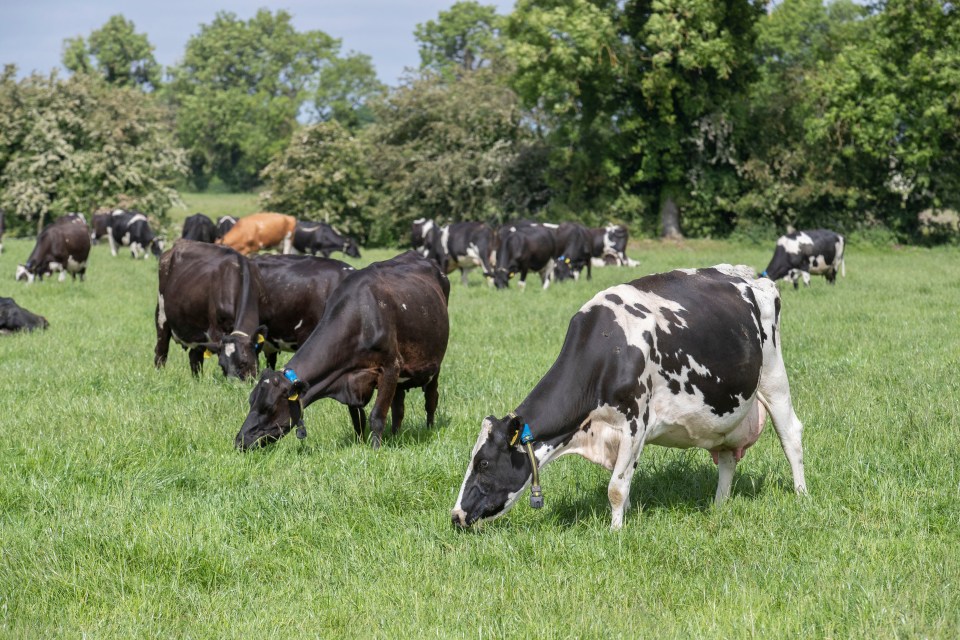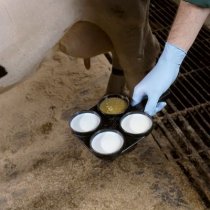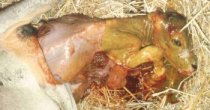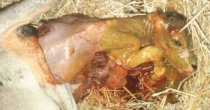
Leptospirosis
Introduction
Leptospirosis is a bacterial disease resulting in abortion, decreased fertility and milk drop in cattle.
Leptospirosis is a zoonosis – it can cause disease in humans. Farmers / farm-workers, abattoir workers and vets are the main risk groups. The disease in man is usually acquired from contact with the urine, placental material or aborted foetus of an infected animal or with contaminated water. Clinical signs of the disease are flu-like, with headaches and fever, occasionally progressing to meningitis.
Aetiology
Leptospirosis is caused by bacteria belonging to the genus Leptospira. Leptospires can survive for extended periods in wet soil and stagnant water.
Leptospira bacteria cause disease in many different species including man. In cattle disease is mainly caused by two serogroups of the serovar Leptospira hardjo, although other leptospira species can affect cattle. The two serogroups that are important in Ireland are Leptospira interrogans hardjo and Leptospira interrogans borgpetersenii.
Epidemiology
During primary infection, cattle shed leptospires in high titres in urine, milk and foetal fluids. This shedding can persist for a number of weeks. Recovered animals may intermittently shed leptospires in urine as many animals become renal carriers of the bacteria after infection.
Direct transmission occurs through contact with:
- Acutely infected animals
- Recovered carrier animals
Indirect transmission may occur through:
- Urine, reproductive secretions, milk from acutely infected animals
- Contaminated water
- Other species e.g. sheep

Clinical Signs
After the first phase of Leptospira infection in cattle, the bacteria localise in the urogenital tract. Early symptoms are usually mild and transient and are often not noticed.
Milk drop
In cows, the first symptom is often a sudden decrease in milk yield. Abortion
Abortions usually occur 6-12 weeks after the initial infection. If the infection occurs in the late gestation, an infected calf may be born. Diagnosis of leptospiral abortion is difficult and based on maternal and foetal serology, as no obvious lesions are associated with the infection.
Abortion rates range from up to 30% in herds not previously infected to 5% in herds where Leptospirosis is endemic.
Infertility
The greatest effects of infection on fertility are low pregnancy rates and increased culling due to low fertility.
The manifestation of these symptoms varies depending on the infection status of the herd. In a chronic inactive state of infection, few signs of poor fertility are seen. During initial infection of the herd or an inactive state that becomes active, the symptoms are more apparent. What changes the health status of a herd from chronic inactive to acute active is not well understood.
A natural immunity is established in a herd after the initial infection phase, however all new animals that enter the herd are susceptible and suffer from an acute infection with the associated symptoms. This is also true in cases where animals that were not present in the infected herd during the initial infection but joined later (e.g. dry cows).

Diagnosis
History and clinical signs may indicate leptospirosis, diagnosis however needs to be confirmed by laboratory tests.
Serology – Serological tests are useful for screening herds with a history of abortions or reproductive problems.
Bacterial isolation – Isolation of Leptospires from blood, cerebrospinal fluid and milk can be attempted in acute cases. Cultures from urine samples can also be made from clinically infected or suspected carrier animals.
Leptospires can also be isolated at necropsy from organs of animals that died during the acute phase of disease. Samples must be chilled and reach the laboratory within 3 hours.
Other laboratory methods such as fluorescent antibody tests and dark field examination of blood and urine samples to detect live bacteria may also be useful for a definitive disease diagnosis.
Control
Control of leptospirosis is based on three equally important aspects:
- Specific control measures – In most farms due to the high sero-prevalence it is not economically feasible to test and cull all the sero-positive animals. Furthermore, serological tests are an unreliable indicator of infection status. All aborting animals or acutely infected animals should be isolated. Acutley infected animals can be treated with antibiotics such as dihydrostreptomycin.
- Biosecurity – Maintaining biosecurity involves avoiding introduction of infected animals into the herd and/or implementing stict isolation / quarantine of introductions until proven negative, and restricting access of livestock to external sources of infection e.g. double fencing is in place at all perimeters, prohibiting access to open waterways etc.
- Vaccination – The use of inactivated vaccine is the most reliable method of controlling leptospirosis. Using a vaccine that is licensed to protect against both serogroups of Leptospira present in Ireland is preferred above alternative vaccines. Animals should be vaccinated with Leptavoid-H. This is because this is the only vaccine licensed for the following conditions:
Proven protection (challenge study data) against Leptospira interrogans hardjo and Leptospira borgpetersenii hardjo
Proven protection against infertility caused by Leptospira hardjo. For further information on Leptavoid H click on the image below.

